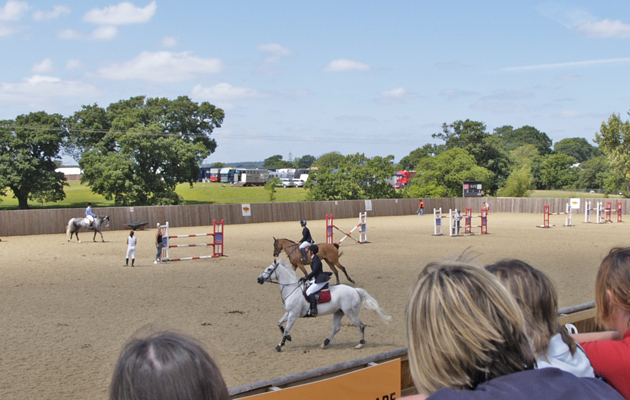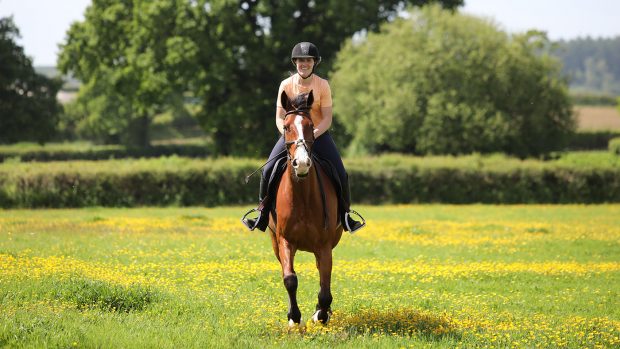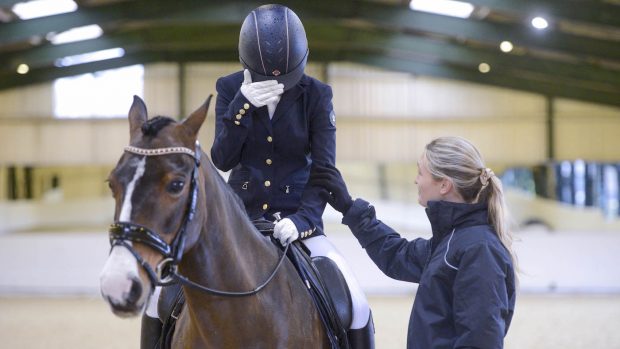Many equestrians use the start of a new year as a time to set new horse riding goals, so we’ve ask the experts how to set realistic goals — and what steps to take to increase the likelihood of seeing them through to a successful conclusion.
1. Set horse riding goals that challenge you
Goals should sit in the happy medium of pushing you out of your comfort zone enough to improve, but not so much that you lose confidence or struggle to succeed. Dressage rider Nic Turner says: “When it comes to moving up a level I base my decision on two aspects: the scores at our current level, and the confidence of the work at home. I moved one of my horses fairly quickly up to inter 1 from prix st george purely because the layout of the test suited him much better.”
2. Define your horse riding goals in detail
Equine sports psychologist, Charlie Unwin says: “It takes a lot to achieve an aspirational horse riding goal, so you should break it down into outcome goals, performance goals and process goals.”
- Outcome goals: the big aspirations you have for you and your horse.
- Performance goals: the standard you need to be at to achieve your outcome goal, and how you measure your progress.
- Process goals: the way you’ll achieve your goals, with how to improve and areas/exercises to work on while riding.
Five-star eventer Kate Honey adds: “With the younger horses, I have long and short-term goals. Often all the five and six-year-olds have the same long-term goal, but how they achieve that will vary.”
3. Work towards your goals every day
It’s vital that you have your horse riding goals in mind when you work with your horse each day. Take Charlie’s outcome-performance-process structure. If your performance goal is to score higher in dressage, then a process goal might be improving straightness. These process goals give you something tangible to work on every time you ride.
“I’m a firm believer in training a level or two above that you compete at,” says Nic. “The work inside the boards should feel comfortable and, dare I say it, easy.”
4. Write your plan down
Don’t rely on keeping your entire plan in your head, as there’s often too much to remember. Charlie suggests creating a mind-map, putting your outcome goal in the middle. Moving out from that is your performance goals, which in turn link to clusters of process goals. A mind-map turns your goal into a plan, and gives you everything from a calendar of competitions to training exercises.
5. Set milestones to measure your performance
Everyone faces setbacks on their road to success, but a plan makes it easier to stay on track, as you can measure your progress and make amendments if necessary. “I make individual plans at the beginning of the year for all the horses, but these are fluid and always changing,” says Kate. “I normally stick to my plan with the older horses, with two or three big competitions and prep events in between.”
6. Take a step back and re-evaluate
Nic emphasises that taking a step back can improve your work: “Things don’t always go to plan and it’s important we react in the right way. If the training seems overwhelming, step back and take a breather. I jump in my spare time and have fun doing that. Quite often the work we were finding hard seems remarkably easy after a week or so off!”
7. Learn to be resilient
“When you’ve done your homework, you become resilient to set-backs,” Charlie says. “With your mind-map, if something goes wrong, it’s typically in one isolated area of the map – rather than your entire plan. Often, all riders need to do is change the time-frame or certain elements of their plan.”
Top tips to help achieve your 2023 horse riding goals
- “Sticking to goals boils down to organisation, determination and motivation. Ride in all weather, and get up early or go to bed late. Have a routine and plan your time” — Nic Turner
- “My top tip would be always set realistic but challenging goals for yourself” — Kate Honey
- “Write everything down! Then you can see how your aspirational goals fit into your everyday riding sessions” — Charlie Unwin
Find out more about Charlie Unwin at performancelegacy.com/equestrian
You may also be interested in…

10 training tips that top riders swear by

12 top riders reveal their superstitions
For some people superstitions are the secret to success... while for others they can be a recipe for disaster. Top

Subscribe to Horse & Hound magazine today – and enjoy unlimited website access all year round
Horse & Hound magazine, out every Thursday, is packed with all the latest news and reports, as well as interviews, specials, nostalgia, vet and training advice. Find how you can enjoy the magazine delivered to your door every week, plus options to upgrade your subscription to access our online service that brings you breaking news and reports as well as other benefits.



